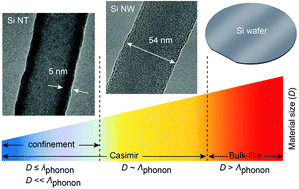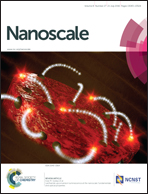Thermal transport in Si and Ge nanostructures in the ‘confinement’ regime
Abstract
Reducing semiconductor materials to sizes comparable to the characteristic lengths of phonons, such as the mean-free-path (MFP) and wavelength, has unveiled new physical phenomena and engineering capabilities for thermal energy management and conversion systems. These developments have been enabled by the increasing sophistication of chemical synthesis, microfabrication, and atomistic simulation techniques to understand the underlying mechanisms of phonon transport. Modifying thermal properties by scaling physical size is particularly effective for materials which have large phonon MFPs, such as crystalline Si and Ge. Through nanostructuring, materials that are traditionally good thermal conductors can become good candidates for applications requiring thermal insulation such as thermoelectrics. Precise understanding of nanoscale thermal transport in Si and Ge, the leading materials of the modern semiconductor industry, is increasingly important due to more stringent thermal conditions imposed by ever-increasing complexity and miniaturization of devices. Therefore this Minireview focuses on the recent theoretical and experimental developments related to reduced length effects on thermal transport of Si and Ge with varying size from hundreds to sub-10 nm ranges. Three thermal transport regimes – bulk-like, Casimir, and confinement – are emphasized to describe different governing mechanisms at corresponding length scales.


 Please wait while we load your content...
Please wait while we load your content...